
What do you mean, Poppy says you can’t buy us anymore treats? What did we ever do to him to deserve that kind of punishment?
I know what you’re wondering Internet: What does economizing, gut health and dog treats all have in common? Hold on to your hats because I’m about to show you how you can improve your gut health, shower your best fur-friends with delicious treats AND save money. This is no gimmick. It’s real. And it’s totally awesome-balls. So read on and be prepared to get your mind blown with easy, cheap, good health for you and your dogs!
Two of the biggest downsides to treating chronic Lyme Disease are the effect it has on your ever decreasing pocket book and the effect it has on your digestive system. But leave it to Mr. Wild Dingo to force, err, I mean, inspire, me to find a way to address both those concerns.
Anyone treating this disease faces a huge financial burden. Many insurance companies do not cover even the basic costs, such as long term, multiple antibiotic or anti-parasite treatments. Out of pocket, these drugs are extremely expensive for one month, let alone for many months or years required to eradicate bacteria and parasites that have been thriving and hiding deep in the tissues and central nervous system.
But even if one is lucky enough to have insurance coverage for most of the drugs, there are multitudes of immune support, herbal anti-microbials, and detox supplements that are nothing short of essential to the success of a Lyme patient’s recovery---none of them covered by insurance.
Whenever I see a war movie with thousands of dead bodies on the field, I always wonder, “Who cleans up all those dead bodies?”
The same is true when a Lyme patient is taking numerous prescription or herbal treatments to kill multiple infections that have grown out of control for years in the body. It is essential to the patient to take a variety of things to clean up the dead bodies in the field. As I rotate through 11 different medications in the (hopefully) final phase of recovery, I can tell you without a doubt that every one of the 20+ non-prescription item I take is 100% essential to my recovery. And they are pricey. So much so, that you have no choice but to list them as their own category in your monthly budget and sigh, make some cuts somewhere else.
When Mr. Wild Dingo gave me the news to cut costs on the dog budget, I buckled down for months planning and researching. When I had hours of brain clarity, I broke down the cost of store bought treats versus treats I can make myself. I measured costs of ingredients and included the cost of my time involved in making treats, because let’s face it: Lyme leaves so little in the tank that even taking an hour or two to make a bunch of treats was a huge burden to me. But this project left me with a goal and something to focus on while I was deep in the trenches of battling this stupid disease last year.
The dogs were happy participants in my kitchen experiments too!
While I was experimenting with inexpensive, homemade dog treats, I was experiencing massive problems in my digestive system. One of the essential books in my arsenal to help manage the nasty effects of antibiotics is GAPS, Gut and Psychology Syndrome, a book by an Dr. Natasha Campbell-McBride, MD and nutritionist, who found a connection between the gut, the immune system and brain disorders. I don’t follow the entire diet mainly because I’m still on antibiotics and it’s pointless to do this until I’m off.
For the record, I find that extreme diets for the average person looking to lose weight or get healthy are whack. I’ve lived my whole life rejecting all notions of whack diets but thanks to undiagnosed and untreated Lyme disease, which in turn, activated a dormant Celiac disease, I am forced into a world of following a “no-wheat, no-gluten” diet for life. But hey, the good news is, I’ll live! There are plenty of yummy things I can eat and I’m perfectly happy with that. For the average person with no disease, I believe that the more variety of real, unprocessed foods you eat, the better, and that most foods are fine in moderation. Diets designed to treat and address major disease and illness is another story and that’s where the GAPS diet really shines.
To its credit, the book proposes the GAPS diet as temporary, albeit from 1-2 ½ years, until the gut is healed and the patient’s symptoms are gone. Eventually the patient can go back to eating a variety of normal, healthy, foods. Still, the diet is one heck of a life style change and would take an enormous effort to follow. It's a great book to read if you're interested in diet and autism, dyslexia, ADD, ADHD, schizophrenia and other psychological illness. (However, I don't think bone broth can cure crackery-nosinous, I already tried. So don't get your hopes up for those of you who have cracker dogs.)
In the end, I did take away one big message from the GAPS book:
Bone broth freaking rules, people!
Apparently there’s more to gut health than probiotics. If you have a digestive disorder, simply tossing probiotics into the mix can make it worse and that’s usually because the digestive and stomach lining have been destroyed. It’s like bringing in the good guys to war on a battleground that’s already destroyed. My friends, feeling probiotics trying to go to work on a destroyed battle ground stomach lining is very painful. Although probiotics are a huge part of the GAPS diet, they are generally introduced very slowly.
One of the simplest methods, and cornerstone in the GAPS diet, to repair gut lining is through homemade bone broth. My digestive issues ran the gamut but mainly I had massive nausea daily and could barely eat for months. I made the bone broth each week and drank a cup or two per day and not only did it help my belly, but my hair and nails never looked better! The nutrients and gelatin found in bone and marrow go right to work on growing cells and repairing the gut lining so when you do add in the probiotics, it’s not a war zone and they can do their job comfortably.
So, because of these two challenges, a budget squeezed by cost of meds and supplements and the impact of treatment on my digestive system, in upcoming posts, I am able to share some easy-to-make, cost-effective, dog treats you can make at home! How fortunate for you!
The cheapest and yet healthiest dog treats I’ve made so far have been those made from the bone broth I cook for myself to help my digestion. To get started, I downloaded Broth, the Elixir of Life, for a simple guide on making bone broths.
I start by saving every single bone from any meats that I purchase or cook. Internet, in my wildest dreams, I never thought I’d become one of those domestic, save-everything, women, but here I am out to dinner and asking the waiter to put the bones in a doggie bag. If I make pork ribs, the bones get saved. If I purchase a whole chicken or even a store-roasted chicken, the bones get saved. You get the picture. No biggie, just toss ‘em all in a bag in the freezer. Separate by animal if you’d like. You can even make fish bone broth which is just as nutritious as poultry, beef or pork. It doesn’t even matter if the bones are cooked or raw, if you have them, save them. Anything goes: tails, ribs, feet, thighs, joints. Save it all. I sometimes buy a whole chicken, cut the breasts off either for our own dinner or dog treats, and then boil the rest of the chicken for broth.
Then when you’re ready, simply toss a bunch of bones (I choose about the amount of one whole chicken or more) in a big pot or slow cooker. Technically, you can fully cook bone broth in 2-3 hours. But I like to cook it anywhere from 24-48 hours depending upon what bones I'm cooking, so I use a slow cooker. If I’m using chicken, I cook it for up to 24 hours. For harder bones like beef bones, I cook for 48-72 hours.
Toss in about a teaspoon of apple cider vinegar to help the breakdown of the bones, let it sit for an hour, then start the slow cooker. I start on high for an hour or two then switch to low to let it barely simmer.
After two hours I scrape off the initial soapy-looking scum. If you have included cooking meat in your bone broth and want to use it for another dish, it’s best to take it out at the 2 hour mark for chicken and 4 hour mark for beef and set it aside. You can also stop your broth making here, for a high gelatin broth, but I prefer to cook it longer, as it will not have as many minerals cooked for the shorter duration.
Then I add in the vegetables: basically anything about to go bad in my refrigerator, such as carrots, celery, onions or fresh herbs like thyme, rosemary and parsley. Whatever floats your boat, Internet. Leeks, garlic, peppercorns also yield great flavor. Yellow onions have the best effect on giving chicken broth that nice yellow color--but only if you are cooking bone broth for yourself. If you are planning to use bone broth for your dogs, do not add it in. Even small amounts of onion can be toxic to dogs.
You don't have to get fussy and cut them small. Big chunks are fine. Even leaving the skins on are fine. Old veggies are fine, as long as they're not moldy or stinky, they're good for broth. My carrots were soft and not very crisp. My celery was new and my herbs were old and about to be tossed.
After adding them to the broth, I forget about it for at least 20 hours or longer if I’m making beef or pork broth. As an aside, you can choose to add your veggies at the end of cooking time, say 1-3 hours before cooking time ends. There are no rules to when you add in the vegetables or herbs. They add more nutrients, flavor and color. If you add them at the end, they can be used in a dish you make that day.
Sometime toward the end of cooking time (1-4 hours to go), I pull out the bones and break and mash them up so the marrow is exposed and toss it all back in for a few hours. You don’t have to do this, but I found the more you can expose the marrow, the better the taste and the more nutritious! I will go as far as to break down all the bones. I find smashing a bunch of chicken bones very therapeutic when I'm feeling particularly bummed about being so sick. Use a mallet in a deep bowl to prevent a mess, or use plant pruning scissors like this to crush and break them apart.
Chicken and turkey bones smash easily within 24 hours of cooking. Pork is somewhat harder and requires longer cooking times, at least 36 hours before they’re smash-able, and beef is the most difficult to smash. I also found that beef can yield the strongest, boldest tasting broth, almost too bold, so I mix them into my chicken for a little kick. But experiment and see what you like.
My favorite broth by far is pork rib broth (above) made from
these pork ribs (above) that have been previously cooked with sweet and sour sauce. I’ve shared this broth with many friends who’ve really enjoyed the taste of it! Imagine all the flavors of the sweet and sour sauce that are still on the bones, cooked right into your broth. Yum!
After you smashed your bones, and let it cook a few more hours, it’s time take it all out, and strain it. I start with a stainless handheld skimmer like this to take out the big stuff and toss it in a bowl.
The rest of the stuff looks like this lovely bowl of bone, marrow and veggies above. Normally, most people would throw this out, but not me! This stuff is highly nutritious and I'm going to show you what to do with it later. It's something every dog would eat up in a heartbeat just as it is. But since the bones are still somewhat jagged and sharp, it's not a good idea to feed it to them.
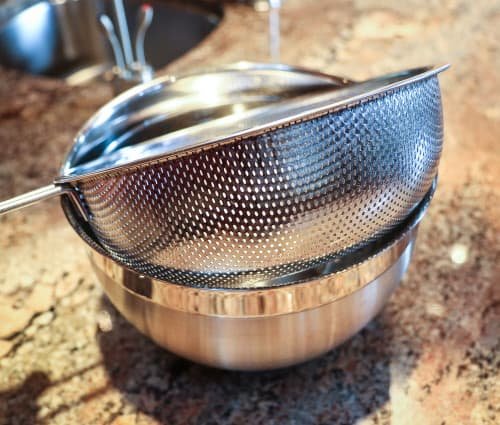
Meanwhile, I finish straining my broth into a larger stainless bowl with a larger strainer/sieve with very small holes like the sieve above.
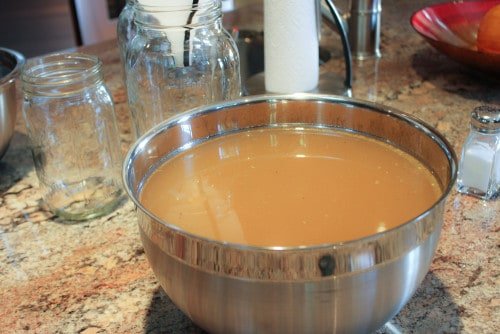
The idea is to get out a lot of the goop but I like a little marrow in my broth so I don’t actually strive to make it perfectly clear. If you like your broth very clear, then simply do not smash up your bones and it will stay clear and easy to strain. I add the goop from the strainer into my bowl of cooked veggies and bones and put it in a Tupperware for use later on.
I first used my bone broth medicinally, drinking 1-2 cups daily. As my gut healed and my drugs changed to be easier on the GI, for the most part I now use broth in cooking and I’m thrilled with how it is a much better cooking ingredient than store bought stock. Friends who’ve come on board with my bone broth madness agree: homemade bone broth adds an amazing depth of flavor to your rice, stews, soups, gravy’s and just about anything you cook in water. The flavor packed with a punch of nutrition makes for a double whammy of goodness.
Now you may be thinking, “This is a lot of work!” Internet, nothing can be further from the truth. I think all of this takes me 30 minutes tops over 3 days! I’ll break it down for you.
- Collect bones from whatever you eat and wherever you eat!
- When you have enough for size of a full chicken and feel like it, put bones in a pot and fill with 4 -5 quarts of water. Add a teaspoon of cider vinegar let set for an hour.
- After an hour, turn on cooker on to simmer. Walk away.
- After 2 hours, skim off the scum. Choose some left over raw vegetables and herbs in the refrigerator. Wash and cut them up in large chunks. Toss them in at the 2 hour mark or whenever you feel like it, at the midway point of cooking or at the end.
- Let it cook at a low simmer, for 24 hours for chicken or 48-72 hours for harder bones, like beef.
- Anytime between 2-8 hours before it’s done, take the bones out with hand held skimmer, put them in a bowl and smash them to expose the marrow. Put them back into the broth to finish cooking.
- When done cooking, strain the broth into a big bowl. Pour some into a cup, add some salt if you’d like and enjoy. Let the rest cool.
- When cool, funnel the broth into 2-3 mason jars. Use metal lids sealed on tightly to keep it fresh. Put the jars in the fridge.
Try to use your broth within 10 days. If you’re a big cook, and cook soups, stews and rices, it will go quickly. You can use it to reheat left-overs. If you use it medicinally, drinking 1-2 cups per day, it will go within 7-10 days.
If you can’t use your broth within 10 days, you can freeze it in freezer-safe glass jars. Or, to really blow your mind: you can dehydrate your broth and store it on the shelf or freezer. Admit it. Your mind is blown. All that time cooking bones in water to make broth, just to delete the water is just cray-cray!
Economically, restoring my gut health using items that would normally be tossed costs no money to make, except for money invested food already purchased for other meals or equipment I had in stock. So, zero costs and only 30 minutes of effort to fix my gut health. In addition, the breakdown of costs per cup, homemade bone broth costs 50% less than store bought broth and it's more nutritious. Though I still buy broth, it's a no-brainer to make it consistently to use for weekly cooking or to aid in restoring the digestive system.
But the biggest value add? The aroma of a good broth wafting through your home and the smiles you get when people visit. Nothing says "home" like the scent of simmering broth.
Mission 1--Restoring gut health without spending more money: Check.
Mission 2--Reinstating dog treats without spending more money: coming up in the next post, Economizing Gut Health and Dog Treats Part 2.
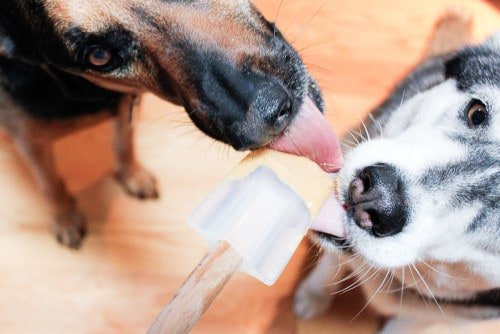
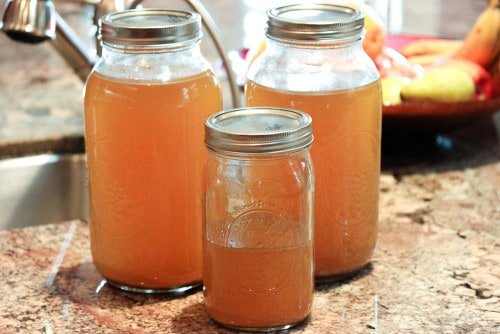
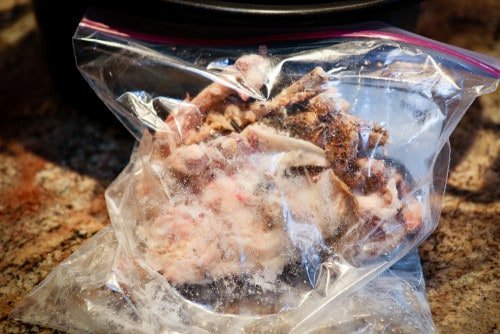
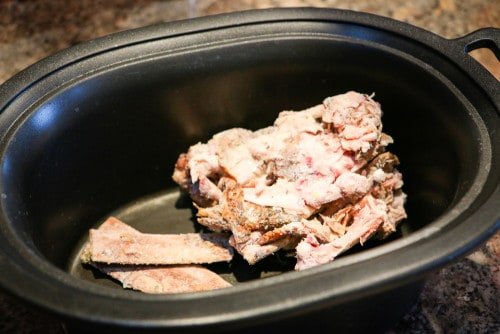
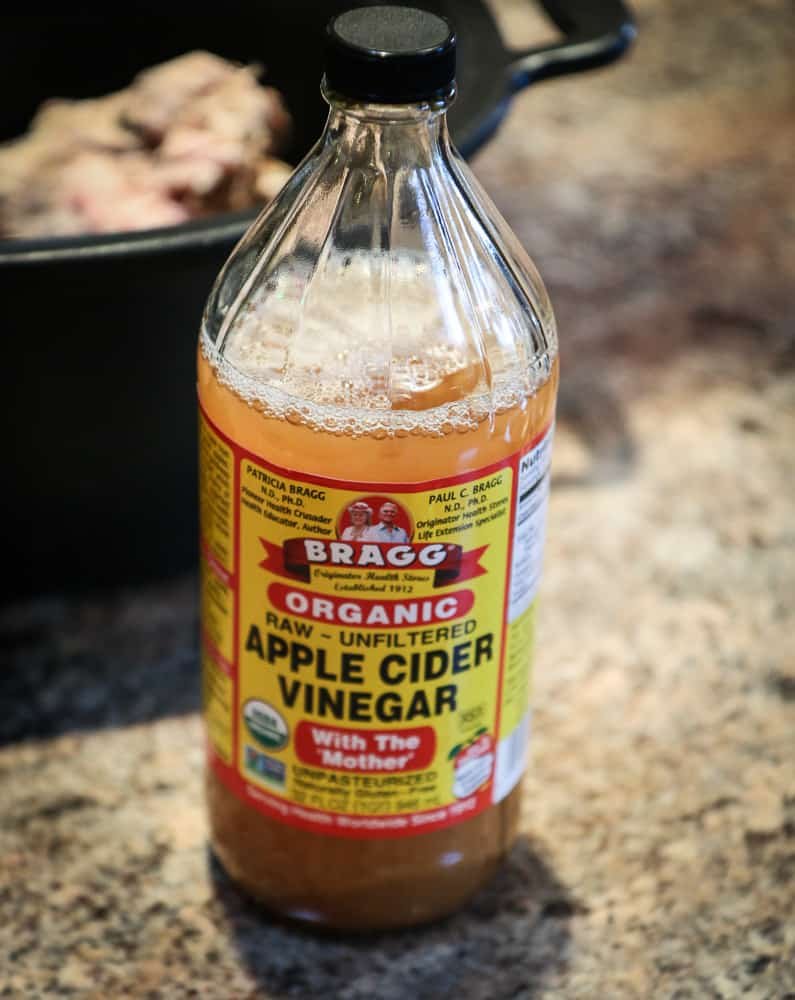
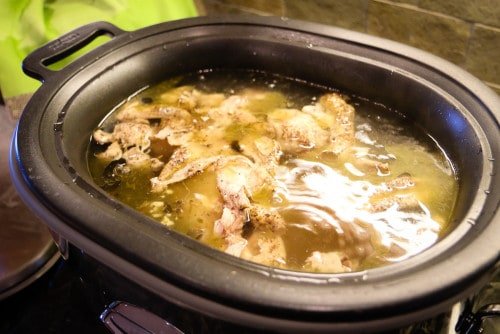
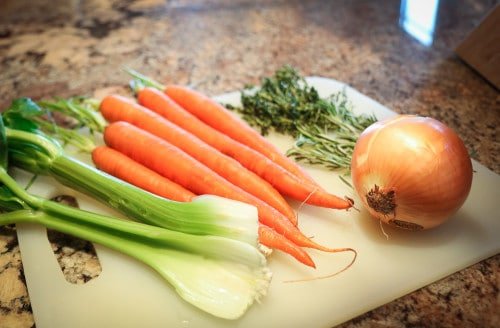
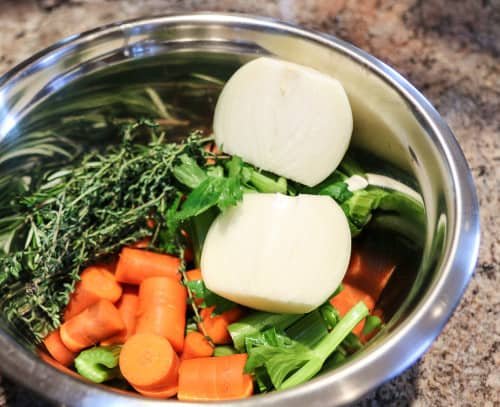
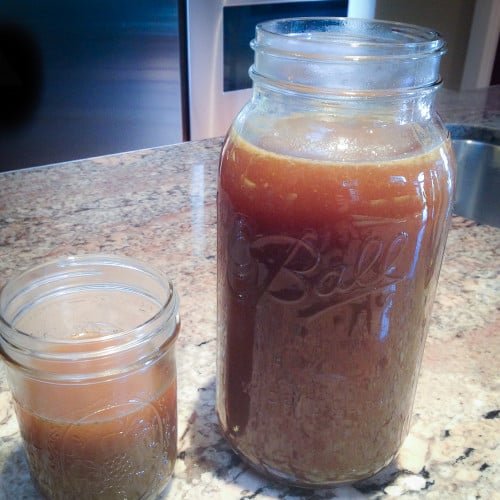
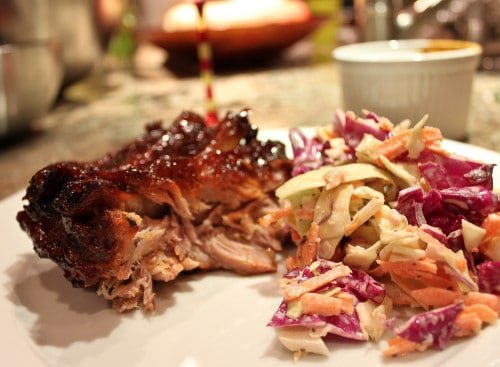
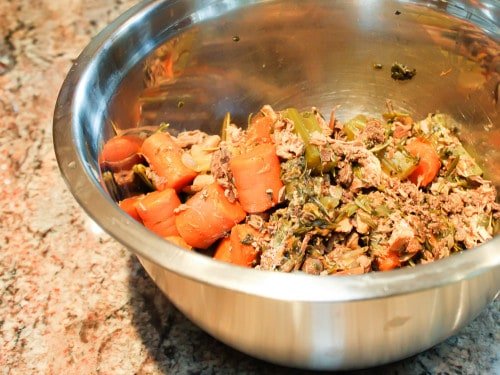

Fascinating! I've never even heard of bone broth or that it could heal certain digestive system issues. I can imagine the flavor would be much better than store bought broth.
You are a tease...... I was expecting a dog treats recipe at the end!...... Looking forward to next post.
Thanks, Kim
What a great description of the process! I make a lot of soup but tend to shy away from meats with bones. Nevermore...
My mouth is watering and my digestive system is SCREAMING - please!, please! please!
Wow this is really interesting! Thank you for sharing it! I might have to try it. It's been seven months since I went gluten free for my celiac so I'm sure my digestive tract has healed a lot, but anything to help it heal more is a bonus in my book. 😀